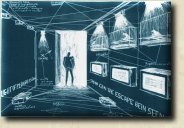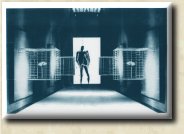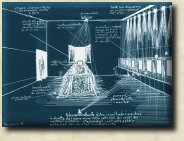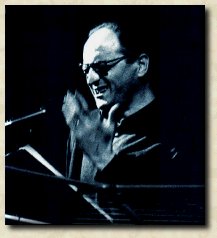Nicola Frangione was born in Forenza (PZ), Italy, in 1953. He has been living and working in Monza since 1972, as an interdisciplinary artist experimenting with several techniques: visual arts, publishing graphic arts, music and sound poetry, video and theatre production, visual poetry and mail art.
As well as being concerned with visual poetry, he is among the main mail artists in Italy. For about 20 years he has been playing a role in developing and spreading this art in Italy, carrying out projects and organizing itinerant exhibitions and workshops.
He has published and produced several art books: the poetry magazine “Armadio e Officina” (since 1975); the book “Osservazioni critiche sulla funzione del nervo ottico nella semiotica dell’arte” (1977); the book “The relativity of language as the enigma of art” (1979); “Zen and Art” and “Snapshot” (1980); “Madame et Theatre” (1987). From 1987 to 1995 he directed the publication of the cultural dynamics magazine “Harta” and managed the multimedia art centre, “Osaon”, Milan, in tandem with Luigi Bianco. Since 1996 he has been co-ordinating “edizioni Harta Performing”, concerning Italian performing arts
Research on music and sound poetry has resulted in several records and CDs: “Mail Music” (LP, 1983); “Italic Environments” (LP, 1985, edizioni Armadio Officina); “Radio Art” (CD, 1997); “Rapporti orali e trasversalità sonore” (CD, 1999). Some of his sound works have been broadcast by national radio stations in: Holland, Sweden, Spain, the USA, Canada, Japan and Italy (RAI uno and RAI tre).
Some of his works as video producer were broadcast within TV shows and programmes between 1985 and 1995: “Film Maker’, Milan; “U-TAPE”, Ferrara video centre; “Tokyo Video Festival”; “Stockholm Art Video Festival”; “CMU”, Madrid; “Arnhem Festival”, Holland; “Tele +3”, Italy etc.
He relies on his performances and theatre to take part in numerous international shows and festivals. Some of his latest itinerant works include: “Percorsi attraverso percorsi”, “Italic Environments”, “Allitterazioni Sonore”, “Rapporti orali e trasversalità sonore”.
“Comerson”, videoinstallations
(versions 01- 02- 03- 04)
COMERSON means a videoinstallation connected with a clear-cut relationship between a work of art environmental area and poetic intermediality. The body, light, space and time are the constants where the spectator/user achieves “modelling”, thus becoming an integral part of the work in real time. A videoinstallation where technology and poor materials harmonize with each other, to restore the multimedia poetic language to its proper simplicity, where video time goes by, while the work remains. Video technology does not record all the gestures of the audience; it sends them immediately, as they are filmed by 10 IR videocameras, which send the images to as many TV-sets enclosed by metal cages. Therefore, in COMERSON the spectator watches himself or herself as an integral part, as a “coming child”, entering the path of the installation, giving his or her own image, showing himself or herself. Every corner of the installation is shot, and the spectator can go out of the frame at any time; however, these movements will cause him or her to enter the next frame; he or she cannot escape his or her role as main character of the work. To sum up: it might look like a game, where you move to avoid being put in a cage; actually, the 10 TV-sets enclosed by the 10 metal cages are all that is caged. The spectator thus becomes a key player within dynamic space, with his or her “ego” and “out of his or her ego”.
“Paths through paths – italic environments”
performances
The performer relies on minimal gestures, making the need for poetics beyond pages both visible and audible.
Musicality as the name for “writing gestures” becomes part and parcel of environmental paths, according to rhythmic trajectories. Gestures develop into meanings beyond the voice; the performer makes scores which stand out as conceptually emotional.
The adult meets his or her ego, within the container of old, common memories. A tactile desire where everything is joined together: the rhythm of the body, the risk of playing.
This “show” results from the need to investigate the various dimensions of “talking” man, visualizing them, through a symbolic language and a structure which draws on two narrative lines to produce one ritual path, remarkable existential spirituality, a sort of intensely enjoyed experience crossing any “seams” and secrets concerning objects loaded with transcendency and poetic intimacy.
The core of the work – that is, the need to match different human components with a view to achieving overall balance – has allowed scenic action to develop horizontally: the performer transits and stops between sound scenery and gestual script, thus resulting in overall poetry.
“Rapporti
Orali e Trasversalità Sonore”
sound
poetry performance
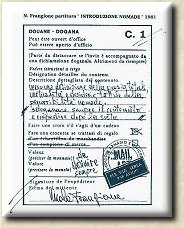 |
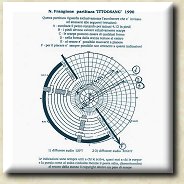 |
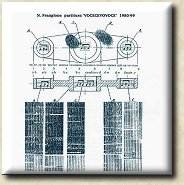 |
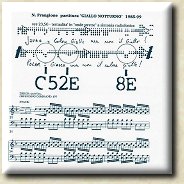 |
||||||
Nicola
Frangione’s sound poetry and concerts are oriented towards what some
artists define as “art dramaturgy”. Gestures as a key form of
expression are a distinguishing feature of his work. On the one hand, his
vocality takes an active part in the performances of the body, playing the
same role as the other linguistic elements; on the other, it stands out
thoroughly, in a sound-focused dimension connected with both texts and
music according to interdisciplinary approaches, harmonizing with the main
orientation of “sound poetry”, which is the name for half a century’s
practice and pragmatic observation.
In
1980 Nicola Frangione began some projects – the first was called
“vocecevovoce” – based on the synergetic use of texts and music:
these elements are not designed to provide “spectacularity” only; they
support each other with a view to “revealing” voice, showing it “creatively”,
emphasizing sound and its significance. “Sound poetry” is involved,
being the name for a sound-focused event understood as an art object,
where texts, voice and music blend.
Therefore,
in Nicola Frangione’s sound poetry, technical specifications are
extended and broken through. His work goes beyond art production. At the
same time, you can find “comprehensive speech” in it, capable of
telling about itself and being looked at, thus becoming synonymous with
architecture, visual construction as well as sound and figurative echoes
of poetic tension, to aim for broader horizons.
Nicola Frangione
introduces some pieces of his latest CD, “Rapporti orali e trasversalità
sonore”, edizioni Harta Performing, Italy, 1999
“Nembo verso
nord” 4.02
“Competitions with clothes serving as reflected shields break out,
competitions with bows drawn at the breasts of the betrayed break out, the
last weep”. Dedicated to all interpersonal meetings/clashes,
performances where the spoken language changes into a nothing-focused
competition, where subjects or competitors are no longer important,
although they are still “masks of
the show, trousers on steps, in the final the defeated breath in the hands”.
After
the competition everything starts again, in the same way. “Nothing
has happened, there is always a referee who blows for the start and the
end of the competition, while others will state the lowest prices.”
“Ittoosang”
4.16
The
score concerns only the listener, who is requested to keep to the
following instructions:
(A)-Listen
to the piece standing for 4.12 minutes. (B)-The feet should wear only
shoes. (C)-The shoes may be of any shape. (D)-Stay in the middle of the
room. (E)-In the middle you can move as you like. (F)-For pleasure’s
sake you can avoid following these instructions.
This
piece is dedicated to all hunters and preys of the new economy. Let us say
to all of them: “ITTOOSANG!”
(an old exclamation, used in some regions of southern Italy, namely
between Naples and Foggia). It means: Throw
your blood! Go to die!).
“The prey became a hunter and escaped from itself, the thought met the
idea and flew away, the thought met the prey, became a hunter and, out of
itself, flew away, the thought with the idea met poetry, the hunter
escaped and the prey out of itself flew away. ITTOOSANG!”.
Instructions
are always useful for those who write them, while they are hardly useful
for those who follow them.
“Pin-occhio
al ticket” 1.31
Pinocchio,
the mythical character of a story by Collodi for a minute’s adultery:
“Pinn...occhio! Watch out for the ticket, because every utopian way has
its own Pinocchio, because every Pinocchio pays for its dream, because
every way costs you what you do not give, because every gift knows the
ticket, watch out! Pinn… loving the fairy, because time flows by and the
interval takes delight.” Dedicated to all grown-up true lies.
“vocecevovoce”
5.39
Sound
alliterations of the word “voce”
(voice); while poetry is bouncing, the poet is jumping).
“bassa
marea” 4.15
In
1984 “bassa marea” was actually recorded. The sound of water refers to
a short recorded piece, about 7-8 cm approaching the shore. After being
stored for several years, in 1999 the recording was processed, unused
concretism being part of visual memory, as it was replaced with an ant
capable of swimming in my mouth. “An uncatchable wave for one being, not an immense one, not an empty one,
not fraught with dread, though similar. Falling on the threshold to
remember everything, being frightened within to remember everything,
watering the grass of the single interval, dissolving the sweet taste of
the insect on the tree. Looking beyond to remember nothing.”
“giallo
notturno” 3.53
“Jaune
nocturne, c’est un objectif de tendance dans une ambiance unique Ici
rien n’est séparé. Tout se noue dans les tripes du poète, le
quotidien après diner, l’égarement parvenu au repos. Mode de
compilation de la poésie musculaire. Désir tactile où rien n’est séparé
ni le rythme du corps ni le risque du jeu. C’est ton jaune nocturne. Bonne
nuit… …”
“Performing
Art e Utopia Concreta”
beyond
multimediality
Nowadays,
as in the past, we are aware that “art” performers, including the
keenest, find it hard to prescind from the models and materials that make
up their work; the characteristics and disciplines of the various forms of
expressions are often constrained, as their projects evolve within art
objects.
In music, as in visual arts, in theatre as in poetry, purpose-designed media have urged artists to become committed to corporative self-defence, on the basis of a manneristic approach – that is, dramatic identification. Media, disciplines and techniques develop – as the result of an attitude carried to extremes – into “philosophical truths” related to existential identification, like an eternal, immutable mother who is willing to answer the human need for changes.
A
performance means just attributing the knowledge of one’s own
experimentation to the medium, ‘unmarried’, performative
transferability, where the artist is involved in his or her own work as
well as in overall action, dialectics harmonizing with critics; to sum up:
poetic detachment where form is duly taken into account, although it is
not exalted.
Within the design-related process, for thirty years multimediality has been connected with critical/operating research, making new technologies and, consequently, new media feasible; nevertheless, it has not done away with experiments closely related to “amazing appearances”; it has often resulted in art forms technically similar to each other. Such uniformity epitomizes the opportunity to connect technical/practical know-how with art-related, ideational know-how on the same aesthetic level.
Although technology allows the artist to rely on increased opportunities, new “amazing appearances” come out again; freed from any critical relationship, it causes the medium to look morbid in a different way, as if it were the name for a new ideology, while being aware of its programmatic limits in both space and time.
The
eternal process of “putting to death” stands out, an attempt to
provide the art world with clear-cut certainties unrelated to one’s
memory, unpredictability as lacking risk ethics, a type of modernity where
nobody falls, nobody gets hurt, but everybody can quickly become connected
with an immature world which puts itself in an unfavourable position as
early as tomorrow, as the result of the latest technologies as synonymous
with opportunities, possibilities, interactivity, virtuality and
multisensorial factors.
In my opinion, expressive media should no longer be distinguished from technology. You just have to look at the media, to realize that they mean the sum of extremely useful functions in terms of both comfort and spectacularization. Nevertheless, we are witnessing perceptive polarization among artists (odourless), as if abstract personalization were involved, an artist who is looking forward to new technological updates, forgetting any circumstances connected with old delight, where life time prevailed over production time.
The artist goes beyond multimediality, in a detached way, if art is to be understood dramatically and “performing art” is to be produced; the work means the artist as the name for interdisciplinary synergy; the artist belongs to common memories as sole maker of his or her own artistic process; a performance means a course running between the language/conceptuality and emotionality/impulsiveness, as thought/action.
Whereas technology as related to more general factors tends to amaze both consumers, who are often unaware of technical mechanisms, and artists, who are aware of the medium but are tied to the growth and causality of the latest finds. The capability of new technologies to deceive the central nervous system results in two sellers who do not know each other, two buyers who get to know each other as consumers interacting within a new, exclusive game which has a major impact. If synthetic space is also synonymous with real space, man will be the maker and the one responsible for his own control. Art understood as “comprehensive dramaturgy” arises from the individual’s virtuous existential characteristic, and the performance may contain both “itself” and “what lies out of itself”.
“Performing art” may develop in parallel with technical know-how and experimentation with languages. However, a sign – a foreign one, an extroverted energy connected with “amazing appearances” – always prevails, whether the body is there or not. Although the performer may be steadily pursuing new experiences and languages in his or her project, he or she will rely on the “rebellious”, psychological action of reaction as art of life.
“The
origin is the goal, because I look at you when you are aware of it”.
According to this short phrase, utopia is real rather than abstract; what is more, real utopia is the mainstay of the “extra-action” of the performer, as traveller of first an inner world and than an outer one; he or she does not depend on any disciplines, techniques or definitions. A performance always epitomizes an original character connected with drama though not with theatre; initially, it takes place in the awareness of one’s existence; later, as a synthesis, it is “put into the field”. The scope of action is changed as the result of inner originality, and the performance translates into a delivery, a birth, an existential event involving “bringing something into the world”, because in all that happens during the performances we acknowledge ourselves as anthropologically lively within the contents.
